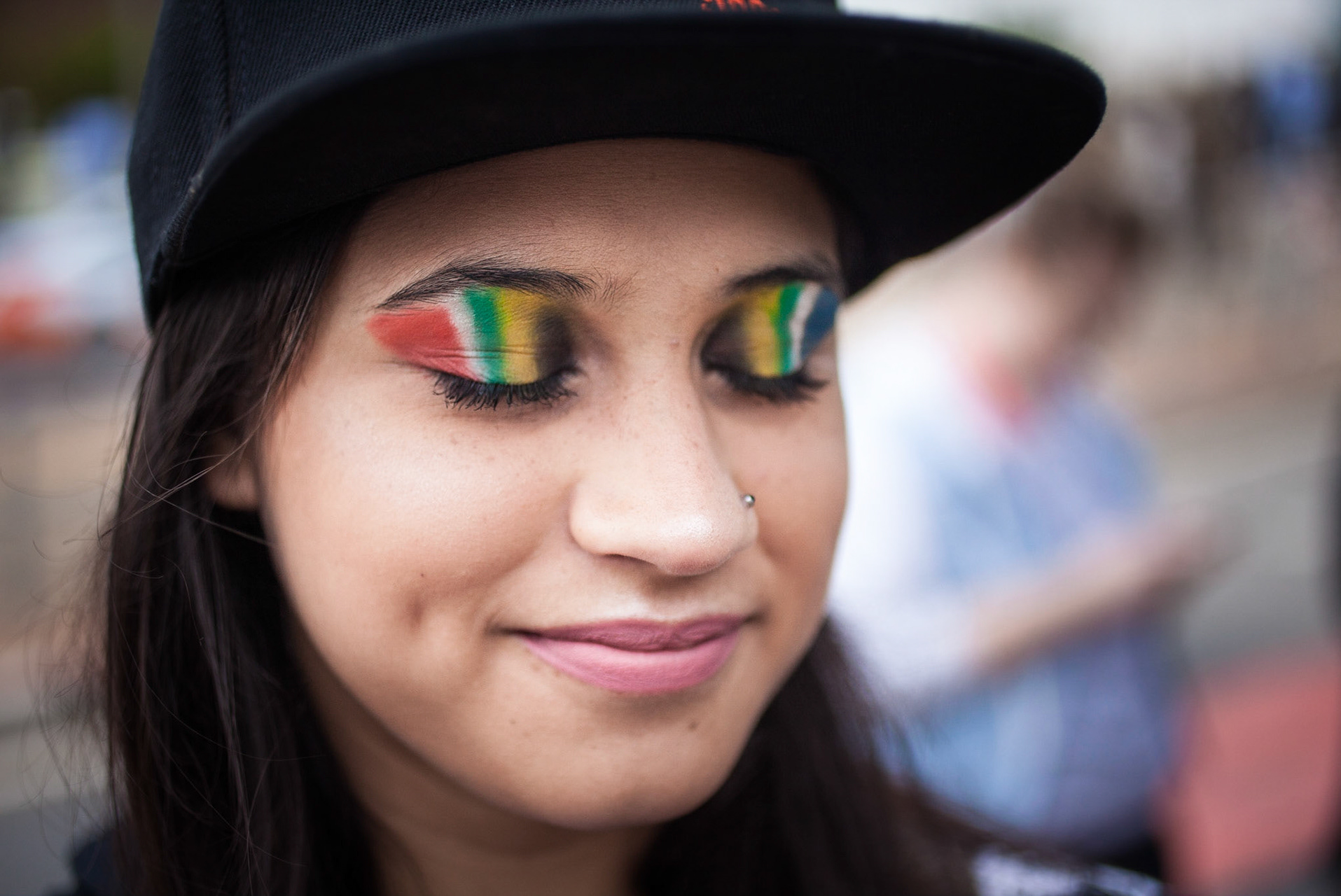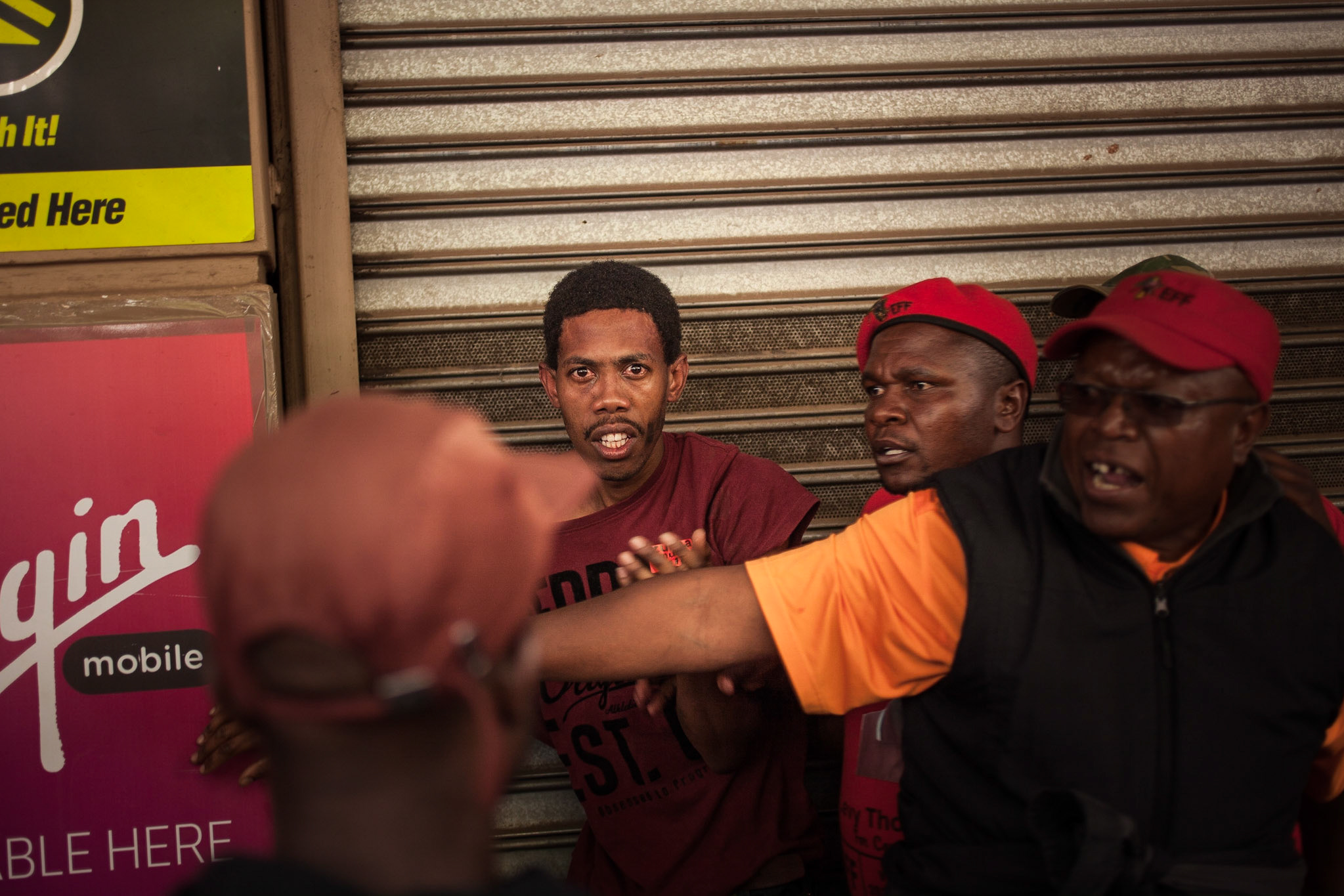I knew that the birth of my son would be a hugely significant moment in my life. I didn’t, however, intentionally think about making a photograph, that captured the essence of that moment, or the human symbolism of that breath. I’m just glad I was present enough to respond and pleased that it reads that way. What I saw, and in considering it for submission, what I re-saw, with nostalgia and reverence, was the mother of my child.
“Immanence”
24 May 2012. Park Lane Hospital
I didn’t feel detached. I’m at my best when my camera gets out my way, when my camera is just an extension of what I see and my response is automatic and without the distraction of worrying about intent or settings.
“Hooked”
24 May 2012. Park Lane Hospital
photographer and I can appreciate the value of being present instead of making photos. I wasn’t trying to achieve a balance but there was a balance.
“2.890”
24 May 2012. Park Lane Hospital
I make most of my photographs for myself firstly and not initially for a broader public. When I do make my photos public, I’m more interested in telling stories. Those stories, very often, infer elapsed time. The work I make public is really just the best of my personal diary and what fits the narrative I’m working on.
“In the Cloud”
29 November 2007. Johannesburg
Mural by Miss Yucki reflected on an outer window of the Intermission Gallery
It would have been equally interesting, on a whole other scale, to see photos of other cities, even rural content, in the same space.
I’m interested in the comparison and dialogue between images, art and photos, and especially what meaning context can reveal in the reading of such things. I look for similarities and differences. For what fits and for what doesn’t seem to fit. For what reinforces and what contradicts. I do this in my own art work as a way of extending the narrative.
“comb over time”
31 August 2012. Johannesburg
Spiff Mczaul “Street-styling” DJ Medicine at the Butcherboy event
My Johannesburg aerial series is literally the view I had from my apartment, in this building. Illustrating this view and making the potential of such rooftop spaces public quickly resulted in me hosting other people’s events, film shoots and exhibitions, quite by accident, and in my own living space. So, I’ve gotten used to that Public / Private divide.
I guess my aerial series started as my own attempt at reflecting a Johannesburg compared to her myth, that challenged the publicly accepted stereotype. This story was: this is Johannesburg, as I see it, come have a look.
But that was only a fraction of the story. I was self-editing a perception of Johannesburg that was at odds with what made Johannesburg really interesting, profoundly beautiful and also problematic in the sense that Johannesburg was hard, merciless and a failure on an inclusive societal level. I was parachuting in events for entertainment and escapist value, which I soon realised had its place, but didn’t acknowledge or address any of my own very real concerns for fundamental transformation.
My work practice was essentially public events facilitator with a social documentary hobby. It seemed important to me that my photos of Johannesburg offered context to my peopled photos, both stories were interesting, but my social documentary held my interest longer, had gravity and was more personally thought provoking.
“Redemption Song”
4 October 2014. Johannesburg
“Thirst”
4 October 2014. Johannesburg
“Opening Night”
10 December 2010. Johannesburg
“Mnemonic Glass”
27 October 2012. Johannesburg
The separation enabled by this viewpoint is vital to what I think makes the story. The perspective is risky, it implicates me as an “outsider” making voyeuristic photos, of people being people, in ways that could be considered to be culturally different from my own. Taken out of context, I know that’s problematic, but my intention is to illustrate commonality beyond culture and draw attention to beauty, despite societal issues. I also think my figurative work, work I still consider to be portraits of Johannesburg, encourages debate and conversations that should, I think, be happening on more personal levels.
It’s just that, over time, the aerial perspective became its own thing, its own singularly specific and problematic story and I felt a responsibility in defining it as such, with me in it, without the lifeline of my street level photos.
My experience of the streets gave context to my photography looking down. My exploration further afield gave context to my personal precinct. The potential of the venue as a vehicle for debate and the cross-pollination of ideas and even multi-cultural integration, evolved to better engage with the surrounding neighbourhood and other inner-city service providers and became, more specifically, collaborative. All of these experiences informed my greater understanding of Johannesburg.
“Bath House”
12 January 2007. Johannesburg
“Skip”
21 September 2007. Johannesburg
“Ninja Turtle”
18 April 2010. Johannesburg
“xes”
16 April 2010. Johannesburg
“Direct”
12 April 2017. Johannesburg
“Brand Antic”
11 February 2008. Johannesburg
I’m attracted to emotive moments. Evidence of a universal human experience, of intimacy, of tenderness, of community, of needs… but also the lack or neglect thereof. For me, even inanimate objects or unpeopled landscapes tell stories of prospect or transience. There can be something so beautiful, so sad, so full of potential about a neglected suitcase. So be it an abandoned drive-in, run away fires or a plastic bag, caught in the wind, I always feel I’m referencing human presence, and mostly comparing what I see to my own experience.
It’s interesting to me therefore that you see “don’t love” but understandable because the images I’m currently sharing (and where my head is at) and particularly the ones I submitted for the street life contest, reveal situational social issues and people making the best of them. I was drawn to the intimacy, humanity and sense of community first and then only to how these things existed in spite of the larger complex city that, at times, made these things so hard. That bittersweet dichotomy, of people being personable in an impersonal landscape, intrigued me, but the city itself sometimes exerted its own beautiful personality, and Johannesburg will always have the weather.
“All my belongings”
4 November 2010. Johannesburg
“Insomnia”
24 January 2014. Johannesburg
“Fight Club”
11 April 2010. Johannesburg
“Manning of the Spring”
24 January 2014. JohannesburG
“Boom”
9 August 2016. Johannesburg
“Chicken”
9 August 2016. Johannesburg


